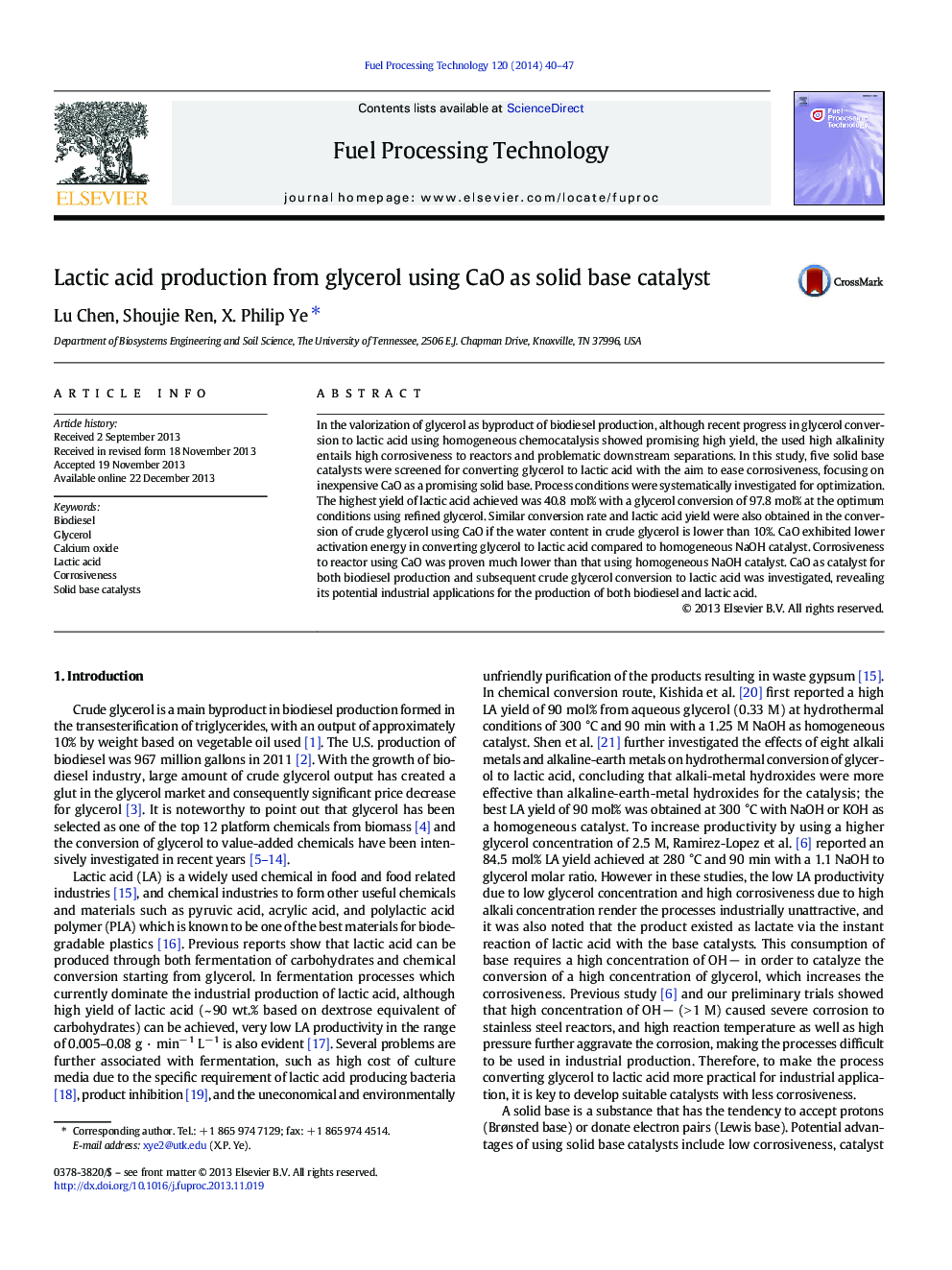| Article ID | Journal | Published Year | Pages | File Type |
|---|---|---|---|---|
| 209858 | Fuel Processing Technology | 2014 | 8 Pages |
•First systematic study on glycerol conversion to lactic acid catalyzed by CaO•CaO has lower activation energy than NaOH in converting glycerol to lactic acid.•CaO causes much less corrosion to reactor comparing to NaOH.•Developed process is applicable to crude glycerol.•A single CaO catalyst can be used for production of both biodiesel and lactic acid.
In the valorization of glycerol as byproduct of biodiesel production, although recent progress in glycerol conversion to lactic acid using homogeneous chemocatalysis showed promising high yield, the used high alkalinity entails high corrosiveness to reactors and problematic downstream separations. In this study, five solid base catalysts were screened for converting glycerol to lactic acid with the aim to ease corrosiveness, focusing on inexpensive CaO as a promising solid base. Process conditions were systematically investigated for optimization. The highest yield of lactic acid achieved was 40.8 mol% with a glycerol conversion of 97.8 mol% at the optimum conditions using refined glycerol. Similar conversion rate and lactic acid yield were also obtained in the conversion of crude glycerol using CaO if the water content in crude glycerol is lower than 10%. CaO exhibited lower activation energy in converting glycerol to lactic acid compared to homogeneous NaOH catalyst. Corrosiveness to reactor using CaO was proven much lower than that using homogeneous NaOH catalyst. CaO as catalyst for both biodiesel production and subsequent crude glycerol conversion to lactic acid was investigated, revealing its potential industrial applications for the production of both biodiesel and lactic acid.
Graphical abstractFigure optionsDownload full-size imageDownload as PowerPoint slide
